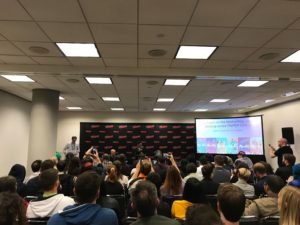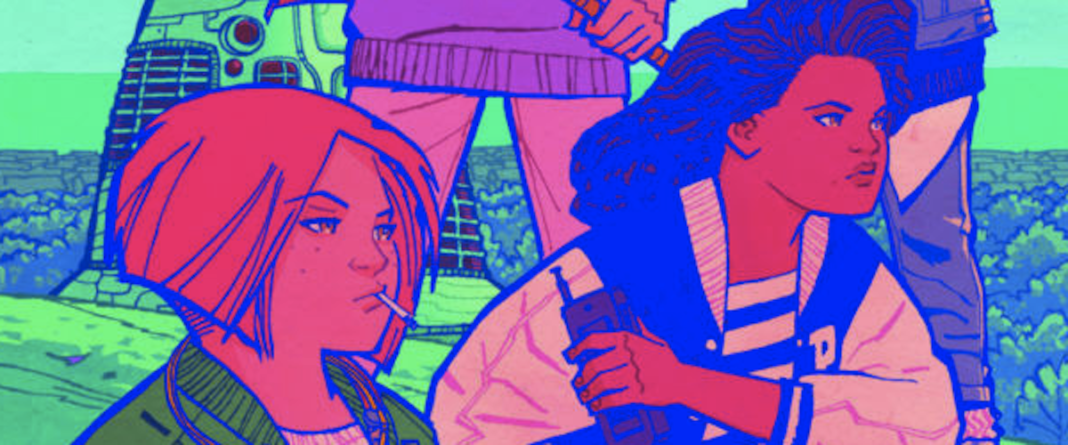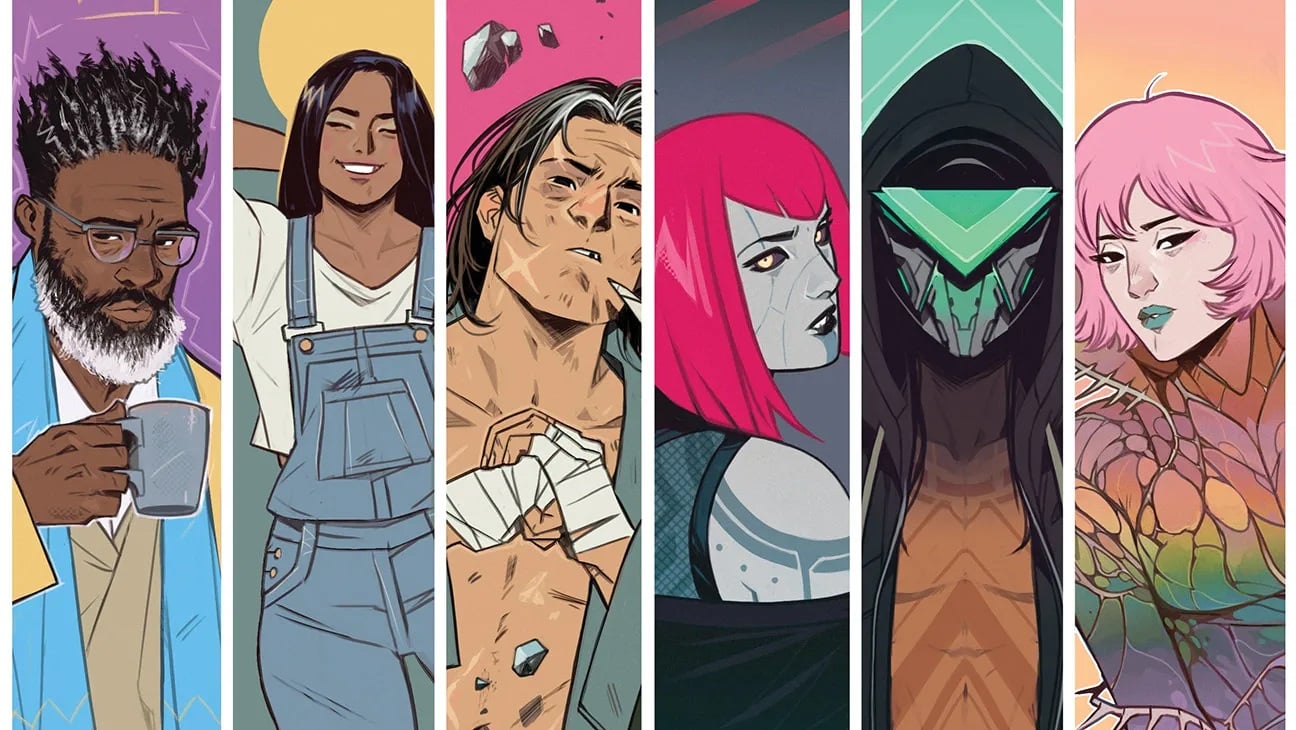
Paper Girls, a time-travel epic that stars four 12-year-old girls, ended this summer. On Saturday at New York Comic Con, the book’s creators — writer Brian K. Vaughan, artist Cliff Chiang, and colorist Matthew Wilson — took a victory lap by sharing new related insights with fans.
The book, which ran for 30 issues, was set in an Ohio suburb in the 1988 and one of the main topics of conversation at the panel was the high level of research the team put in to recreate that environment in a way that felt authentic. Why the ’80s?
“It was a laziness of not wanting to do any research other than looking at old family photos,” Vaughan said, also noting that he reached out to his mom for any info about his life when he was 12, and received a giant dossier in return. “It was scary how much information she had collected on me.”
One got the impression that for Chiang and Wilson, the research process was a bit more intensive than that (although, to be fair, Vaughan was being a bit cheeky). Chiang worked hard to bypass the stereotypical styles often seen in media about the ’80s, the leg warmers and stuff like that that are mostly from the early part of the decade. By studying his own junior high school yearbook from 1988, he was able to draw clothes that 12-year-olds in that year actually wore and how they wore them, rather than guessing and ending up with little girls who for some reason are wearing the time period’s high fashion. Wilson went through a similar process with his coloring.
They even took care to accurately render Vaughan’s hometown, which was also a suburb outside of Cleveland.
“Cliff drew my childhood Catholic church,” Vaughan said, “…and then we burned it down.”
In a discussion about their deeper motivations as creators, the panel said they were attracted to time travel here because there is something so powerful about considering what your 12-year-old self would think about your 40-year-old self. And, indeed, while sitting in that room, I definitely confronted that (and actually came away feeling good, at least temporarily, because I was at big thing about comic books).
Chiang also had a lot of interesting insights to share about accurately rendering 12-year-olds in a way that didn’t just make them small adults. Capturing their essence, aside from just their aesthetic, was key.
“Nobody is cool when they’re 12,” Chiang said, “but they’re all trying…really hard.”
The trio talked quite a bit about the book’s fourth member, letterer Jared K. Fletcher, who wasn’t there but (deservedly) received much praise for rendering an entire futuristic language for the book. That language was so thoughtful, that fans were able to translate it, which they regularly did on Reddit.
And while Paper Girls as a comic may be concluded, the property is ramping up to soon debut on Amazon Prime’s streaming television service. Vaughan said writer Stephany Folsom (Toy Story 4) is writing a pilot as the production assembles a writers room. Vaughan noted the story will have to change for TV (I mean, it IS a different medium and all), and that they will be able to do some new things they couldn’t on paper. For example, Vaughan said Folsom had the killer idea to incorporate the girls’ mothers.
Finally, the Paper Girls panel concluded with all three participants talking about their next projects. Wilson is coloring, like, everything, Chiang is working on a new project for DC Black Label, and Vaughan said he is “writing all Saga all the time.” Albeit without an official return date just yet.








